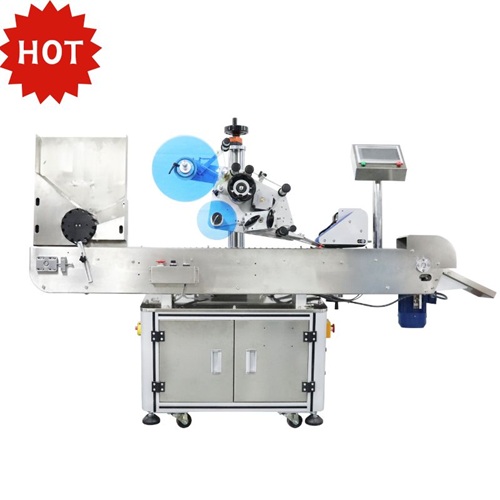In the pharmaceutical and biotechnology industries, precision and traceability are non-negotiable. Every vial that leaves a production line must carry accurate, compliant, and durable labeling information. Manual labeling is no longer viable for high-volume or GMP-regulated environments. That’s where automatic vial labeling machines come in — a cornerstone of modern pharmaceutical packaging lines.
1. Ensuring Accuracy and GMP Compliance
Pharmaceutical products are subject to strict labeling standards under GMP (Good Manufacturing Practice) and FDA 21 CFR Part 11 regulations. An automatic pharmaceutical vial labeling machine guarantees that each label is applied precisely in the correct position, free from wrinkles or misalignment.
High-end labeling systems integrate vision inspection cameras and barcode verification systems to confirm every vial is properly identified before release. This reduces human error, prevents mix-ups, and ensures every batch meets full compliance.
2. Consistent Label Placement and Speed
Manual vial labeling is slow, inconsistent, and unsuitable for mass production. Modern high speed vial sticker labeling machine can label up to 300–600 vials per minute — depending on size and shape.
With servo-controlled rollers and adaptive bottle handling systems, they maintain ± 1 mm accuracy even on curved glass or plastic surfaces.
This level of precision ensures that every vial—from vaccines to injectable drugs—maintains a clean, professional, and standardized appearance.
3. Enhancing Product Traceability and Safety
In today’s pharmaceutical supply chains, traceability equals safety. Labels now carry batch numbers, expiry dates, QR codes, and serial numbers used for digital tracking.
An automatic vial label applicator integrates seamlessly with serialization and MES systems, allowing full traceability from production to patient delivery.
This digital integration reduces recall risks and supports anti-counterfeiting efforts — vital for vaccine and biologic drug distribution.
4. Versatility Across Different Vial Types
A single production line may handle multiple vial types — from 2 ml ampoules to 50 ml glass vials.
Modern vial labeling machines for biotech applications are designed for quick changeovers, allowing operators to switch formats in minutes.
Adjustable conveyors, modular rollers, and automatic bottle spacing systems make these machines ideal for multi-product facilities.

5. Cost-Effectiveness and Labor Reduction
While the initial investment in an automatic vial labeling machine can be significant, the long-term return is clear.
Manufacturers typically reduce labor costs by 30–50 %, while improving throughput and consistency.
In addition, fewer labeling errors mean lower waste and higher operational efficiency — a direct boost to ROI.
6. Integration with Filling and Capping Lines
A major advantage of modern vial labelers is their easy integration with existing filling and capping lines.
Automated conveyors and synchronization sensors ensure labels are applied immediately after sealing, without disrupting the production flow.
This inline process minimizes contamination risk and supports cleanroom standards in biotech and vaccine manufacturing.
In the era of automation and regulatory precision, vial labeling machines have become essential for pharmaceutical and biotech companies aiming to meet global standards while maintaining efficiency.
Whether you are labeling vaccines, diagnostic reagents, or injectable solutions, choosing a reliable automatic vial labeling machine ensures compliance, safety, and long-term cost savings.
Work Time
Receive your information 24 hours a day
Beijing time: Monday to Friday 9:00-17:30